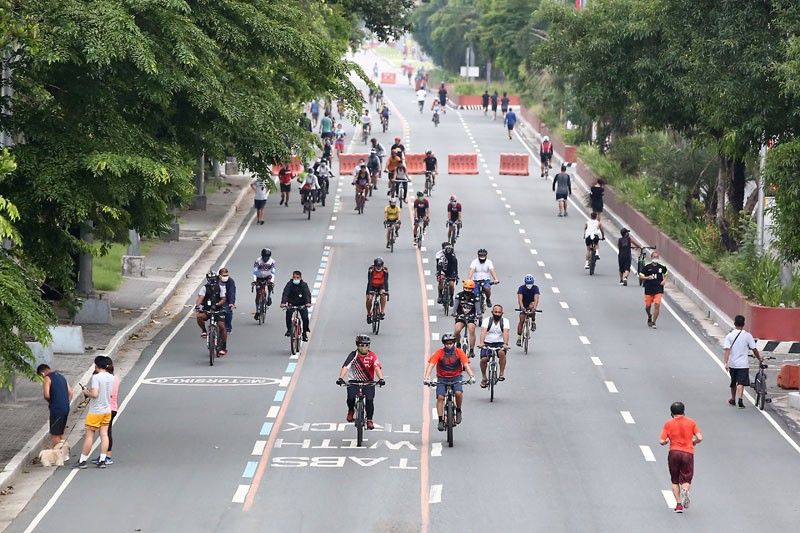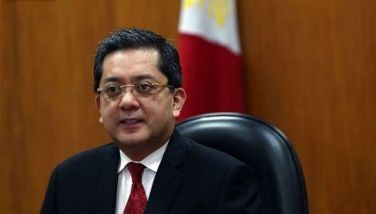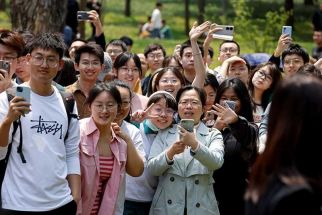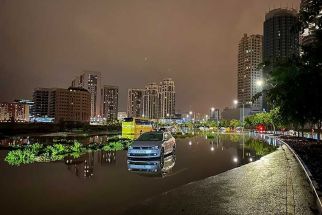Cebu City back to ECQ; no easing in Metro Manila

MANILA, Philippines — There are no changes in the quarantine restrictions in Metro Manila, but Cebu City has reverted to the strictest lockdown scenario due to the rising number of coronavirus disease 2019 (COVID-19) cases that threaten to overwhelm the city’s healthcare capacity.
Metro Manila, which accounts for about half of the country’s COVID-19 cases, will remain under the more lenient general community quarantine (GCQ) until the end of the month.
Cebu City’s status, meanwhile, reverted to the strictest enhanced community quarantine (ECQ) from GCQ because of the “increasing number of new cases” and “widespread transmission” of COVID-19 in most of its barangays, according to Resolution No. 46-A issued by the Inter-Agency Task Force on the Management of Emerging Infectious Diseases (IATF).
The resolution also cited the “significant increase in critical care utilization against critical care capacity” in the city, which means that its healthcare facilities are being overworked because of the increasing number of patients.
Talisay, a component city under the province of Cebu, was placed under modified enhanced community quarantine (MECQ), the status between ECQ and GCQ, for the same reasons.
Other areas that will be under GCQ until June 30 are Isabela, Nueva Vizcaya, Quirino and Santiago City in Cagayan Valley; Aurora, Bataan, Bulacan, Olongapo, Tarlac in Central Luzon; Cavite, Laguna, Batangas, Rizal and Quezon in CALABARZON; Occidental Mindoro in MIMAROPA, all in Luzon; Bohol, Cebu province, Negros Oriental, Siquijor, Mandaue City and Lapu-Lapu City in the Visayas and Davao City and Zamboanga City in Mindanao.
The rest of the country have been placed under the most relaxed modified general community quarantine (MGCQ), or just a step away from the so-called “new normal,” wherein an area is not under quarantine but is still required to observe health measures and physical distancing.
Presidential spokesman Harry Roque said Cebu City’s healthcare capacity is in danger of being overwhelmed.
He said 45 percent of the city’s 60 ventilators are now in use while all of its 27 intensive care unit beds are now occupied. About 90 percent of the city’s 339 isolation beds and 93 percent of its 133 bed wards are also being used.
Roque said a majority or 61 percent of Cebu City’s 80 barangays have active COVID-19 cases, 13 of them considered “worst hit.”
The city’s virus transmission rate, meanwhile is 1.3 percent, as against the national average of 1.07 percent.
Roque said infections in Metro Manila rose by 1,152 in the last two weeks but the region has more available health facilities to accommodate persons who will catch the virus.
Focus on Cebu City
Interior Secretary Eduardo Año said law enforcers would focus on Cebu City, the only area under strictest quarantine protocols, and nearby Talisay City.
“We will give attention to Cebu City and Talisay because of the spike (in the number of infections). We are thinking of deploying additional police personnel in Cebu to ensure that the ECQ would be enforced,” Año said at the IATF meeting on Monday.
While the IATF agreed not to tighten quarantine measures in Metro Manila, officials would be more aggressive in enforcing localized lockdowns.
“The implementation of barangay lockdowns will be more aggressive because even if we have limited the increase in the number of deaths, we still have many positive cases and new cases in the National Capital Region,” Año said.
Roque said the easing of quarantine measures in Metro Manila would depend on the cooperation of its residents.
“Will we ever graduate to MGCQ? We hope so and that’s what we’re striving for. Metro Manila is borderline (in terms of risk). Seven means that the risk is moderate. We are at 6.9,” the Palace spokesman said.
“To my countrymen, we have the answers on how we can slow it (spread of the virus) down,” he added.
Roque said Metro Manila, home to more than 12 million and contributor of about a third of the country’s gross domestic product, has an advantage because almost all critical care resources are in the region. Its population density, however, makes it easy for the virus to spread.
“Population density is part of the problem. We are congested and there are several areas where it is hard to observe social distancing,” Roque said.
At the IATF meeting, President Duterte said he was heartened by the high recovery rate but reminded the public to continue complying with health standards to prevent the spread of the virus.
“The battle against COVID is not over. The germ is still there... You know I cannot say it’s second wave because it is still increasing, the infected ones, and the number of deaths is 1,000,” the President said.
“Although what is very heartening is the recovery which is about 6,252. It’s a good record compared to the other countries. I don’t know if it has something to do with... the difference here is the weather. Maybe it’s not too cold or the germ is not really...comfortable in hot places,” he added.
Duterte said the easing of restrictions does not mean that the public can set aside health protocols.
“We are gradually easing restrictions to make way for our economic viability as individuals and as a nation. But it does not mean that we will forget our minimum health standards. I cannot stop everybody from going out,” the President said.
“The problem is you allow children to go out when the place is not yet ready for them to be outside. If they get sick, do not blame us. Do not forget that we warned you about the grave consequences,” he added.
Duterte reminded the public to wash their hands frequently and to observe safe distance.
“Let us continue to observe proper social distancing if you go out... If you are from Parañaque, avoid those who are from Quezon City. It should be that far... I’m joking. I am joking because we are all sleepy,” he said.
To emphasize his point about the need for safe distancing, Duterte cited the case of Brazil, which has recorded more than 888,000 COVID-19 cases and about 43,000 deaths.
“Many have died by the thousands in Brazil. Ako, sinabi ko na eh kasi napunta ako ng Brazil. Maraming tao talaga doon, dikit-dikit (When I went to Brazil, there were many people there and it was congested),” Duterte said.
On Cebu City’s reverting to the most restrictive ECQ, Health Secretary Francisco Duque III said it was “due to the increasing number of new cases and widespread community transmission in the majority of barangays in the city, as well as the consistent case doubling time of less than seven days and the significant increase in critical care utilization against critical care capacity, Cebu City shall be placed under enhanced community quarantine.”
Mayor’s appeal
In a radio interview, Cebu City Mayor Edgardo Labella said they will appeal the city’s getting placed again under ECQ.
“We will make the necessary adjustments and eventually, in a few days, we will make the necessary appeal,” he said in an interview over radio dzMM.
“We need to go back to general quarantine because business is hurting,” he said.
The city reported 3,434 confirmed COVID-19 cases as of Saturday. However, Abella clarified the figure may have emerged due to massive testing conducted on residents.
Over 25,000 individuals in Cebu have undergone testing for the virus since the last week of March.
Abella said 1,858 or around 54.10 percent of the patients have recovered, higher than the national recovery rate of approximately 22 percent.
The mortality rate is only at 1.08 percent with 37 deaths, which is lower compared to the country’s mortality rate of 4.23 percent, he added.
Abella said mass testing and contact tracing were the “best way” to keep COVID-19 from spreading.
“The best way to fight this invisible enemy is massive testing and massive contact tracing,” he said.
Those found positive but with mild symptoms are also required to undergo self quarantine for 14 days at barangay isolation centers instead of being made to stay with their families.
Talisay Mayor Gerald Anthony Gullas, for his part, said he was surprised by the IATF’s placing the city under modified ECQ.
“I was surprised, but I will never be someone who will question the decision. Maybe the data showed that we needed to be in MECQ,” said Gullas.
Gullas spoke with IATF chief implementer Carlito Galvez right after the announcement of the latest quarantine status of LGUs and was told the decision was based on the DOH-7’s epidemiologists’ data.
Gullas said Galvez had told him he could appeal the decision.
The Talisay mayor said he would consult with other local officials, especially with Gov. Gwendolyn Garcia, on which action to take next.
Talisay City has 59 active cases and 16 deaths. It reported seven new recoveries yesterday for a total of 43.
“To all Talisaynons, I am deeply sorry that we have to go through this again. I’m as surprised as you are. Will update you as I have more details. Thank you and again I apologize for any inconvenience this will cause you,” Gullas said. Emmanuel Tupas, Caecent No-ot Magsumbol (Freeman)
Related video:
- Latest
- Trending



























